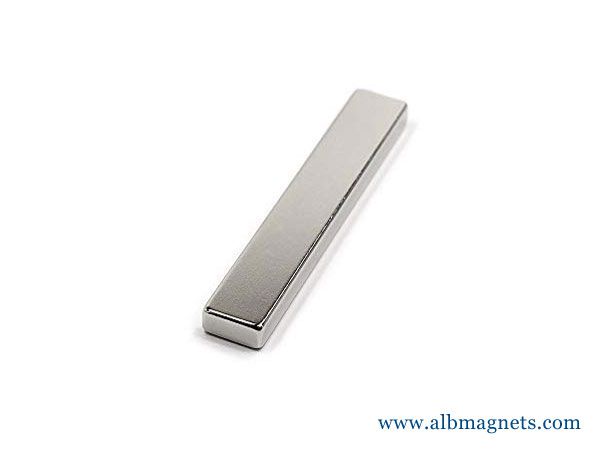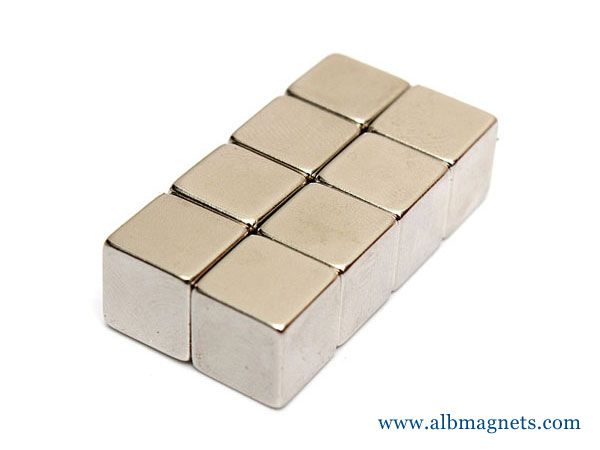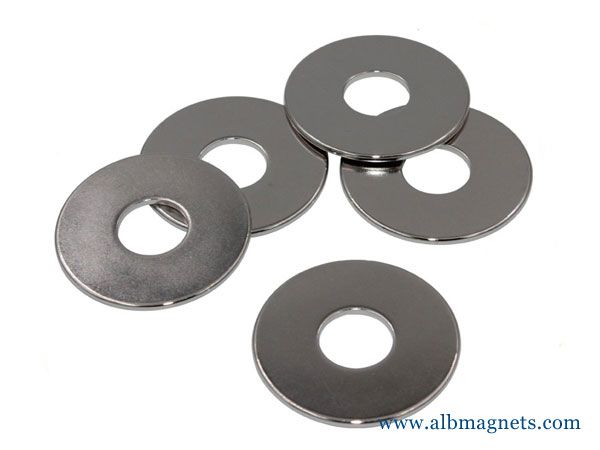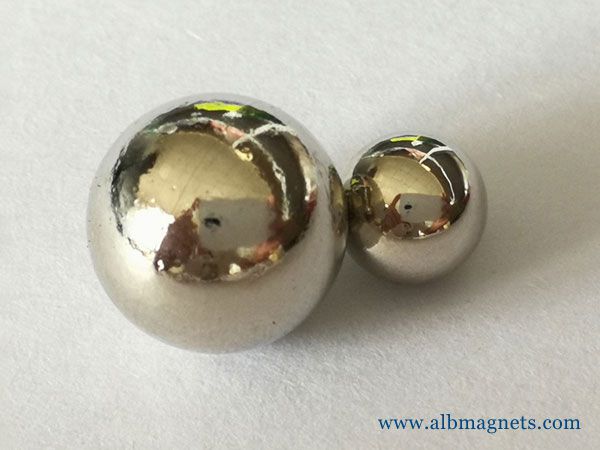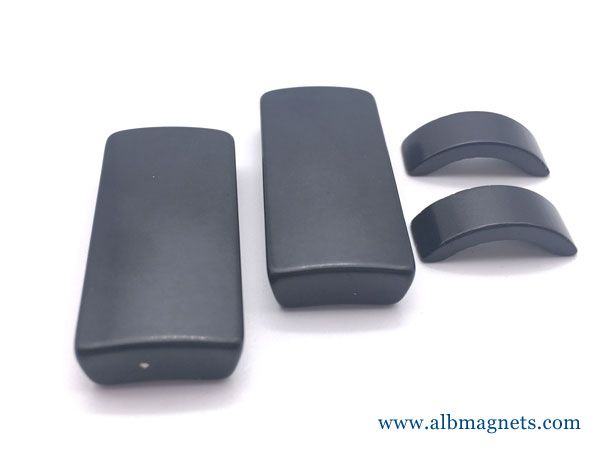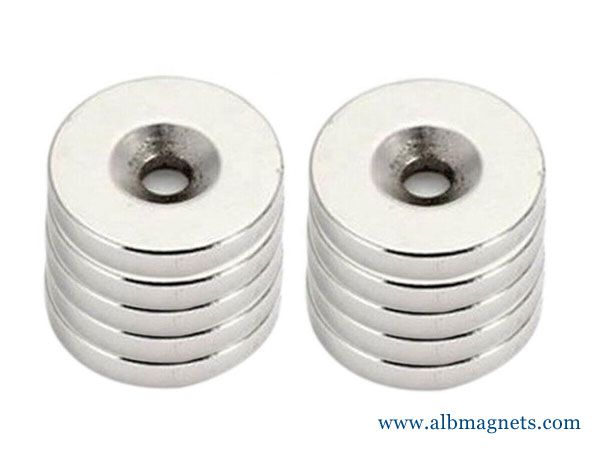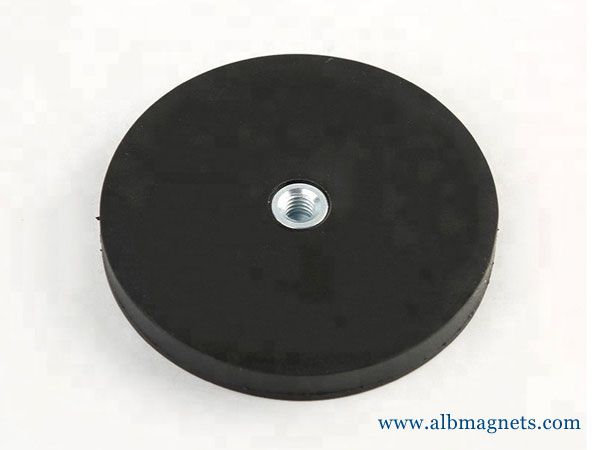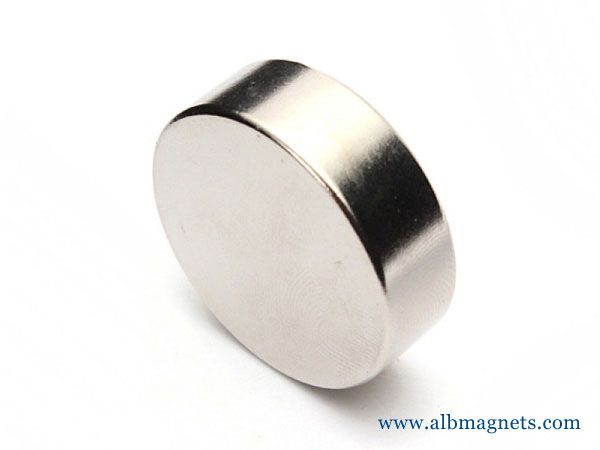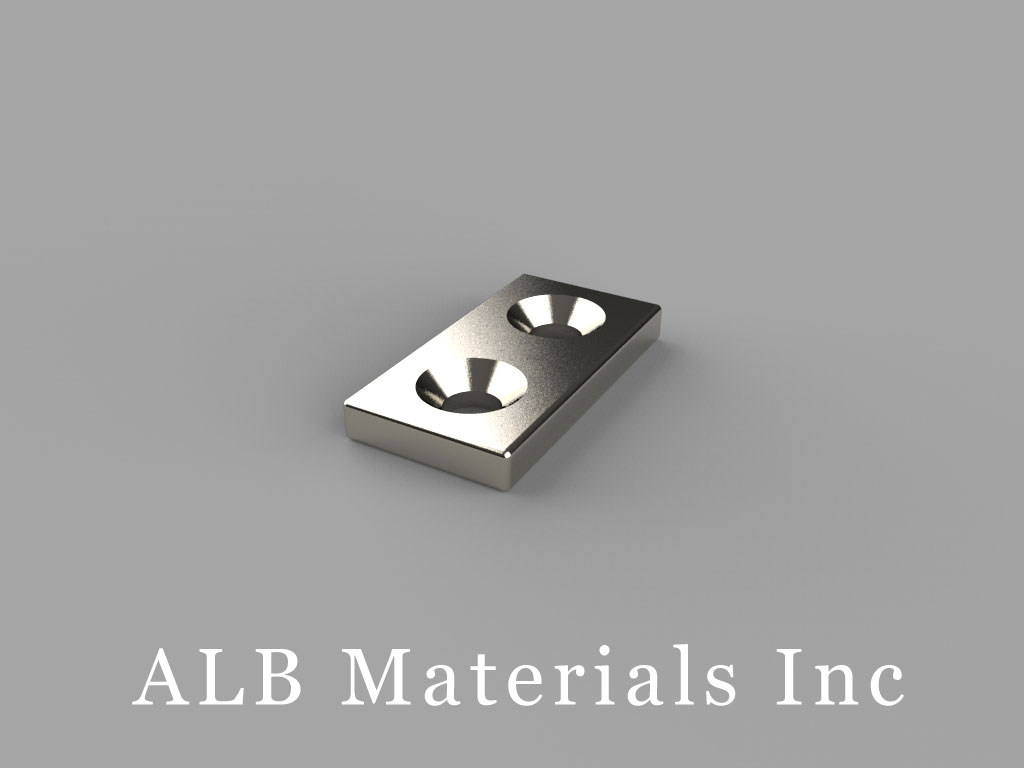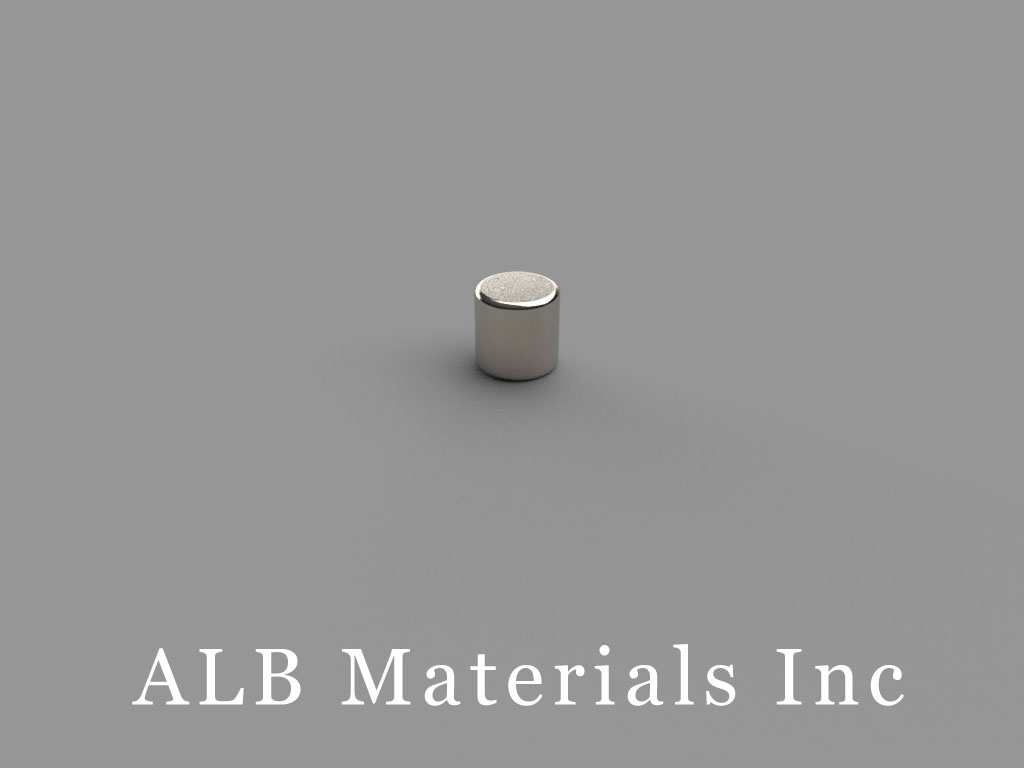401 Ryland St. Ste 200-A,
Reno, NV 89502
United States
E-mail: sales@albmaterials.com
- MMS-D-X8 Standard Mounting Magnets
- D7A Neodymium Magnets, 7/16 inch dia. x 5/8 inch thick
- D84PC-RED Plastic Coated Neodymium Magnets
- D-D12.7H6.35/P Neodymium Magnet, 12.7x6.35mm Disc Magnet
- C-D5H8-N42UH Neodymium Magnet, 5x8mm Cylinder Magnet
- D-D20H4-N42AD Neodymium Magnet, 20x4mm Disc Magnet
- B228 Neodymium Magnets, 1/8 inch x 1/8 inch x 1/2 inch thick
- SB443-IN Neodymium Magnets, 1/4 inch length x 1/4 inch width x 3/16 inch thick, with step IN
- DX0Y8 Neodymium Magnets, 1 inch dia. x 2 1/2 inch thick
- B20x7x4mm Neodymium Magnet, 20 x 7 x 4mm Block Magnet
- BX0C1 Neodymium Magnets, 1 inch x 3/4 inch x 1/16 inch thick
- B-W5H2L10-N52 Neodymium Magnet, 10x5x2mm Block Magnet
- D-D12H3-N52 Neodymium Magnet, 12x3mm Disc Magnet
- B30x5x2mm Neodymium Magnet, 30 x 5 x 2mm Block Magnet
- D203 Neodymium Magnets, 1/8 inch dia. x 3/32 inch thick
- RX033CS-P Neodymium Magnets, 1 inch od x 3/16 inch thick with countersunk hole for #10 screw
5 examples of ferromagnetic materials
5 examples of ferromagnetic materials
Classes of Magnetic Materials
The origin of magnetism lies in the orbital and spin motions of electrons and how the electrons interact with one another.
The best way to introduce the different types of magnetism is to describe how materials respond to magnetic fields.
This may be surprising to some, but all matter is magnetic.
It's just that some materials are much more magnetic than others.
The main distinction is that in some materials there is no collective interaction of atomic magnetic moments, whereas in other materials there is a very strong interaction between atomic moments.
The magnetic behavior of materials can be classified into the following five major groups:
Magnetic Properties of some common minerals
Materials in the first two groups are those that exhibit no collective magnetic interactions and are not magnetically ordered.
Materials in the last three groups exhibit long-range magnetic order below a certain critical temperature.
Ferromagnetic and ferrimagnetic materials are usually what we consider as being magnetic (ie., behaving like iron).
The remaining three are so weakly magnetic that they are usually thought of as "nonmagnetic".
1. Diamagnetism
Diamagnetism is a fundamental property of all matter, although it is usually very weak.
It is due to the non-cooperative behavior of orbiting electrons when exposed to an applied magnetic field.
Diamagnetic substances are composed of atoms that have no net magnetic moments (ie., all the orbital shells are filled and there are no unpaired electrons).
However, when exposed to a field, a negative magnetization is produced and thus the susceptibility is negative.
If we plot M vs H, we see:
Note that when the field is zero the magnetization is zero.
The other characteristic behavior of diamagnetic materials is that the susceptibility is temperature independent.
Some well known diamagnetic substances, in units of 10-8 m3/kg, include:
quartz (SiO2) -0.62
2. Paramagnetism
This class of materials, some of the atoms or ions in the material have a net magnetic moment due to unpaired electrons in partially filled orbitals.
One of the most important atoms with unpaired electrons is iron.
However, the individual magnetic moments do not interact magnetically, and like diamagnetism, the magnetization is zero when the field is removed.
In the presence of a field, there is now a partial alignment of the atomic magnetic moments in the direction of the field, resulting in a net positive magnetization and positive susceptibility.
In addition, the efficiency of the field in aligning the moments is opposed by the randomizing effects of temperature.
This results in a temperature-dependent susceptibility, known as the Curie Law.
At normal temperatures and in moderate fields, the paramagnetic susceptibility is small (but larger than the diamagnetic contribution).
Unless the temperature is very low (<<100 K) or the field is very high paramagnetic susceptibility is independent of the applied field.
Under these conditions, paramagnetic susceptibility is proportional to the total iron content.
Many iron-bearing minerals are paramagnetic at room temperature.
Some examples, in units of 10-8 m3/kg, include:
Montmorillonite (clay) 13
Siderite(carbonate) 100
Pyrite (sulfide) 30
The paramagnetism of the matrix minerals in natural samples can be significant if the concentration of magnetite is very small.
In this case, a paramagnetic correction may be needed.
3. Ferromagnetism
When you think of magnetic materials, you probably think of iron, nickel or magnetite.
Unlike paramagnetic materials, the atomic moments in these materials exhibit very strong interactions.
These interactions are produced by electronic exchange forces and result in a parallel or antiparallel alignment of atomic moments.
Exchange forces are very large, equivalent to a field on the order of 1000 Tesla, or approximately 100 million times the strength of the earth's field.
The exchange force is a quantum mechanical phenomenon due to the relative orientation of the spins of two-electron.
Ferromagnetic materials exhibit parallel alignment of moments resulting in large net magnetization even in the absence of a magnetic field.
The elements Fe, Ni, and Co and many of their alloys are typical ferromagnetic materials.
Two distinct characteristics of ferromagnetic materials are their
(1) spontaneous magnetization and the existence of
(2) magnetic ordering temperature
Spontaneous Magnetization
The spontaneous magnetization is the net magnetization that exists inside a uniformly magnetized microscopic volume in the absence of a field.
The magnitude of this magnetization, at 0 K, is dependent on the spin magnetic moments of electrons.
A related term is the saturation magnetization which we can measure in the laboratory.
The saturation magnetization is the maximum induced magnetic moment that can be obtained in a magnetic field (Heat);
beyond this field, no further increase in magnetization occurs.
The difference between spontaneous magnetization and the saturation magnetization has to do with magnetic domains (more about domains later).
Saturation magnetization is an intrinsic property, independent of particle size but dependent on temperature.
There is a big difference between paramagnetic and ferromagnetic susceptibility.
As compared to paramagnetic materials, the magnetization in ferromagnetic materials is saturated in moderate magnetic fields and at high (room-temperature) temperatures:
Heat Tesla
1000-10000
Curie Temperature
Even though electronic exchange forces in ferromagnets are very large, thermal energy eventually overcomes the exchange and produces a randomizing effect.
This occurs at a particular temperature called the Curie temperature (TC).
Below the Curie temperature, the ferromagnet is ordered and above it, disordered.
The saturation magnetization goes to zero at the Curie temperature.
A typical plot of magnetization vs temperature for magnetite is shown below.
The Curie temperature is also an intrinsic property and is a diagnostic parameter that can be used for mineral identification.
However, it is not foolproof because different magnetic minerals, in principle, can have the same Curie temperature.
Hysteresis
In addition to the Curie temperature and saturation magnetization, ferromagnets can retain a memory of an applied field once it is removed.
This behavior is called hysteresis and a plot of the variation of magnetization with a magnetic field is called a hysteresis loop.
Another hysteresis property is the coercivity of remanence (Hr).
This is the reverse field which, when applied and then removed, reduces the saturation remanence to zero.
It is always larger than the coercive force.
The initial susceptibility (χ0) is the magnetization observed in low fields, on the order of the earth's field (50-100 μT).
The various hysteresis parameters are not solely intrinsic properties but are dependent on grain size, domain state, stresses, and temperature.
Because hysteresis parameters are dependent on grain size, they are useful for the magnetic grain sizing of natural samples.
4. Ferrimagnetism
In ionic compounds, such as oxides, more complex forms of magnetic ordering can occur as a result of the crystal structure.
One type of magnetic ordering is called ferrimagnetism.
A simple representation of the magnetic spins in a ferrimagnetic oxide is shown here.
The magnetic structure is composed of two magnetic sublattices (called A and B) separated by oxygens.
The exchange interactions are mediated by the oxygen anions.
When this happens, the interactions are called indirect or superexchange interactions.
The strongest superexchange interactions result in an antiparallel alignment of spins between the A and B sublattice.
In ferrimagnets, the magnetic moments of the A and B sublattices are not equal and result in a net magnetic moment.
Ferrimagnetism is therefore similar to ferromagnetism.
It exhibits all the hallmarks of ferromagnetic behavior- spontaneous magnetization, Curie temperatures, hysteresis, and remanence.
However, Ferro- and ferrimagnets have very different magnetic ordering.
Magnetite is a well known ferrimagnetic material.
Indeed, magnetite was considered a ferromagnet until Néel in the 1940s, provided the theoretical framework for understanding ferrimagnetism.
Crystal Structure of Magnetite
Magnetite, Fe3O4 crystallizes with the spinel structure.
The large oxygen ions are close-packed in a cubic arrangement and the smaller Fe ions fill in the gaps.
The gaps come in two flavors:
tetrahedral site: Fe ion is surrounded by four oxygens
octahedral site: Fe ion is surrounded by six oxygens
The tetrahedral and octahedral sites form the two magnetic sublattices, A and B respectively.
The spins on the A sublattice are antiparallel to those on the B sublattice.
The two crystal sites are very different and result in complex forms of exchange interactions of the iron ions between and within the two types of sites.
The structural formula for magnetite is
[Fe3+]A [Fe3+,Fe2+]B O4
This particular arrangement of cations on the A and B sublattice is called an inverse spinel structure.
With negative AB exchange interactions, the net magnetic moment of magnetite is due to the B-site Fe2+.
5. Antiferromagnetism
If the A and B sublattice moments are exactly equal but opposite, the net moment is zero.
This type of magnetic ordering is called antiferromagnetism.
The clue to antiferromagnetism is the behavior of susceptibility above a critical temperature, called the Néel temperature (TN).
Above TN, the susceptibility obeys the Curie-Weiss law for paramagnets but with a negative intercept indicating negative exchange interactions.
Crystal Structure of Hematite
Hematite crystallizes in the corundum structure with oxygen ions in a hexagonal close-packed framework.
The magnetic moments of the Fe3+ ions are ferromagnetically coupled within specific c-planes but antiferromagnetically coupled between the planes.
Above -10°C, the spin moments lie in the c-plan but are slightly canted.
This produces a weak spontaneous magnetization within the c-plan (σs = 0.4 Am2/kg).
Below -10°C, the direction of the antiferromagnetism changes and becomes parallel to the c-axis;
there is no spin canting and hematite becomes a perfect antiferromagnet.
This spin-flop transition is called the Morin transition.
Examples of ferromagnetic materials
Ferromagnetic materials are those which are strongly magnetized even in the absence of an external magnetic field.
Examples of ferromagnetic materials are:
Iron, nickel, cobalt, gadolinium and their alloys
Ferromagnetism: Definition & Examples
We discuss which common materials are ferromagnetic, why these materials are ferromagnetic while others aren't, how processes inside the material actually create the magnetic field and more.
Defining Ferromagnetism
Everyone loves to play with magnets.
It seems almost like magic to feel them push and pull on one another, even though they're not touching.
It did seem like magic to ancient people, but today we understand those forces and where they come from, so we know it's just science.
Magnetic fields arise from moving electric charge (current), and we use this effect all the time when we make motors, generators, and so on.
But, we've also learned that some materials can cause a magnetic field all by themselves.
Pieces of such materials might not start out making a field, but, if we place them in a separately generated field and then remove them, we find that they 'remember' that and thereafter create a magnetic field of their own.
Such materials are called ferromagnetic.
Magnetic Fields
All magnetic fields arise from electric charges in motion.
In magnetic materials, the moving charges are the electrons that revolve around the atoms or molecules of the material.
You might ask why, then, are not all materials magnetic, since all materials are made of atoms or molecules, and all atoms and molecules have electrons in motion associated with them?
That's a great question! But it has a great answer too.
First of all, some atoms and molecules have electron distributions so that the motions of the various electrons cancel out as far as producing a magnetic field goes.
Even in materials that do have 'uncancelled' electrons, sometimes the atoms and molecules themselves have random arrangements so that the tiny fields produced by each one wind up canceling each other out.
So in both cases, we wind up with no large overall field.
In ferromagnetic materials, the arrangement of the atoms or molecules is easy to change - when we apply an external magnetic field to such a material, the arrangement will shift so that the fields produced within the material 'line up' with the external field.
Then, when we remove the external field, the internal fields help to hold one another aligned, so the material continues to produce a significant externally-measurable field.
Magnetic Domains & Ferromagnetism
The changes to alignment within the material don't usually go all the way to the atomic or molecular scale.
It's common to find that a piece of the material is made up of regions within which the atomic/molecular fields are already aligned.
But, when the material is in a non-magnetized state these regions produce fields in random directions, and they all cancel out.
An external field can align the fields of entire regions.
Scientists call these regions magnetic domains.
It's important to understand that the physical regions themselves do not rotate during the realignment process.
Rather, the region's magnetic field can be realigned within the region.
Domains are regions within a piece of magnetic material that produce unidirectional field contributions
Ferromagnetic materials are materials in which the domains will tend to keep one another magnetically aligned (once they become aligned) so that most or all of the domains produce a field in the same direction.
There are other classes of magnetic materials, such as ferrimagnetic (which follow the same principal, except only a fraction of the domains become permanently aligned and hence have a weaker self-generated field) and antiferromagnetic (which have domains that take on an alternating pattern of alignment and hence make very little field of their own).
Of these, ferromagnetic materials have the strongest and most noticeable magnetic fields.
The most common ferromagnetic materials are iron, nickel, and cobalt (and most alloys formed of these elements).
If you check a periodic table of elements, you'll find that these three elements are next-door neighbors.
This makes sense, since location in the periodic table has to do with an element's electron structure, and that structure also controls the extent to which atoms of the element can produce magnetic fields.
Ferromagnetism
Iron, nickel, cobalt and some of the rare earth (gadolinium, dysprosium) exhibit a unique magnetic behavior which is called ferromagnetism because iron (Ferrum in Latin) is the most common and most dramatic example.
Samarium and neodymium in alloys with cobalt have been used to fabricate very strong rare-earth magnets.
Ferromagnetic materials exhibit a long-range ordering phenomenon at the atomic level which causes the unpaired electron spins to line up parallel with each other in a region called a domain.
Within the domain, the magnetic field is intense, but in a bulk sample, the material will usually be unmagnetized because the many domains will themselves be randomly oriented with respect to one another.
Ferromagnetism manifests itself in the fact that a small externally imposed magnetic field, say from a solenoid, can cause the magnetic domains to line up with each other and the material is said to be magnetized.
The driving magnetic field will then be increased by a large factor which is usually expressed as a relative permeability for the material.
There are many practical applications of ferromagnetic materials, such as the electromagnet.
Ferromagnets will tend to stay magnetized to some extent after being subjected to an external magnetic field.
This tendency to "remember their magnetic history" is called hysteresis.
The fraction of the saturation magnetization which is retained when the driving field is removed is called the remanence of the material and is an important factor in permanent magnets.
All ferromagnets have a maximum temperature where the ferromagnetic property disappears as a result of thermal agitation.
This temperature is called the Curie temperature.
Ferromagnetic materials will respond mechanically to an impressed magnetic field, changing length slightly in the direction of the applied field.
This property, called magnetostriction, leads to the familiar hum of transformers as they respond mechanically to 60 Hz AC voltages.
Long-Range Order in Ferromagnets
The long-range order which creates magnetic domains in ferromagnetic materials arises from a quantum mechanical interaction at the atomic level.
This interaction is remarkable in that it locks the magnetic moments of neighboring atoms into a rigid parallel order over a large number of atoms in spite of the thermal agitation which tends to randomize any atomic-level order.
The sizes of domains range from 0.1 mm to a few mm.
When an external magnetic field is applied, the domains already aligned in the direction of this field grow at the expense of their neighbors.
If all the spins were aligned in a piece of iron, the field would be about 2.1 Tesla.
A magnetic field of about 1 T can be produced in annealed iron with an external field of about 0.0002 T, a multiplication of the external field by a factor of 5000! For a given ferromagnetic material the long-range order abruptly disappears at a certain temperature which is called the Curie temperature for the material.
The Curie temperature of iron is about 1043 K.
The Curie Temperature
For a given ferromagnetic material the long-range order abruptly disappears at a certain temperature which is called the Curie temperature for the material.
The Curie temperature of iron is about 1043 K.
The Curie temperature gives an idea of the amount of energy it takes to break up the long-range ordering in the material.
At 1043 K the thermal energy is about 0.135 eV compared to about 0.04 eV at room temperature.
Magnetic Domains
The microscopic ordering of electron spins characteristic of ferromagnetic materials leads to the formation of regions of magnetic alignment called domains.
The main implication of the domains is that there is already a high degree of magnetization in ferromagnetic materials within individual domains, but that in the absence of external magnetic fields those domains are randomly oriented.
A modest applied magnetic field can cause a larger degree of alignment of the magnetic moments with the external field, giving a large multiplication of the applied field.
These illustrations of domains are conceptual only and not meant to give an accurate scale of the size or shape of domains.
The microscopic evidence about magnetization indicates that the net magnetization of ferromagnetic materials in response to an external magnetic field may actually occur more by the growth of the domains parallel to the applied field at the expense of other domains rather than the reorientation of the domains themselves as implied in the sketch.
Some of the more direct evidence we have about domains comes from the imaging of domains in single crystals of ferromagnetic materials.
The sketches above are after Young and are adapted from magnified images of domain boundaries in single crystals of nickel.
They suggest that the effect of external magnetic fields is to cause the domain boundaries to shift in favor of those domains which are parallel to the applied field.
It is not clear how this applies to bulk magnetic materials which are polycrystalline.
Keep in mind the fact that the internal magnetic fields which come from the long-range ordering of the electron spins are much stronger, sometimes hundreds of times stronger, than the external magnetic fields required to produce these changes in domain alignment.
The effective multiplication of the external field which can be achieved by the alignment of the domains is often expressed in terms of relative permeability.
Domains may be made visible with the use of magnetic colloidal suspensions which concentrate along the domain boundaries.
The domain boundaries can be imaged by polarized light, and also with the use of electron diffraction.
Observation of domain boundary movement under the influence of applied magnetic fields has aided in the development of theoretical treatments.
It has been demonstrated that the formation of domains minimizes the magnetic contribution to the free energy.
Ferromagnetism is a kind of magnetism that is associated with iron, cobalt , nickel , and some alloys or compounds containing one or more of these elements.
It also occurs in gadolinium and a few other rare-earth elements.
In contrast to other substances, ferromagnetic materials are magnetized easily, and in strong magnetic fields the magnetization approaches a definite limit called saturation.
When a field is applied and then removed, the magnetization does not return to its original value—this phenomenon is referred to as hysteresis (q.v.).
When heated to a certain temperature called the Curie point (q.v.), which is different for each substance, ferromagnetic materials lose their characteristic properties and cease to be magnetic;
however, they become ferromagnetic again on cooling.
The magnetism in ferromagnetic materials is caused by the alignment patterns of their constituent atoms, which act as elementary electromagnets.
Ferromagnetism is explained by the concept that some species of atoms possess a magnetic moment —that is, that such an atom itself is an elementary electromagnet produced by the motion of electrons about its nucleus and by the spin of its electrons on their own axes.
Below the Curie point, atoms that behave as tiny magnets in ferromagnetic materials spontaneously align themselves.
They become oriented in the same direction, so that their magnetic fields reinforce each other.
One requirement of a ferromagnetic material is that its atoms or ions have permanent magnetic moments.
The magnetic moment of an atom comes from its electrons, since the nuclear contribution is negligible.
Another requirement for ferromagnetism is some kind of interatomic force that keeps the magnetic moments of many atoms parallel to each other.
Without such a force the atoms would be disordered by thermal agitation, the moments of neighbouring atoms would neutralize each other, and the large magnetic moment characteristic of ferromagnetic materials would not exist.
There is ample evidence that some atoms or ions have a permanent magnetic moment that may be pictured as a dipole consisting of a positive, or north, pole separated from a negative, or south, pole.
In ferromagnets, the large coupling between the atomic magnetic moments leads to some degree of dipole alignment and hence to a net magnetization.
The French physicist Pierre-Ernest Weiss postulated a large-scale type of magnetic order for ferromagnets called domain structure.
According to his theory, a ferromagnetic solid consists of a large number of small regions, or domains, in each of which all of the atomic or ionic magnetic moments are aligned.
If the resultant moments of these domains are randomly oriented, the object as a whole will not display magnetism, but an externally applied magnetizing field will, depending on its strength, rotate one after another of the domains into alignment with the external field and cause aligned domains to grow at the expense of nonaligned ones.
In the limiting state called saturation, the entire object will comprise a single domain.
Domain structure can be observed directly.
In one technique, a colloidal solution of small magnetic particles, usually magnetite, is placed on the surface of a ferromagnet.
When surface poles are present, the particles tend to concentrate in certain regions to form a pattern that is readily observed with an optical microscope.
Domain patterns have also been observed with polarized light, polarized neutrons, electron beams, and X rays.
In many ferromagnets the dipole moments are aligned parallel by the strong coupling.
This is the magnetic arrangement found for the elemental metals iron (Fe), nickel (Ni), and cobalt (Co) and for their alloys with one another and with some other elements.
These materials still constitute the largest group of ferromagnets commonly used.
The other elements that possess a collinear ordering are the rare-earth metals gadolinium (Gd), terbium (Tb), and dysprosium (Dy), but the last two become ferromagnets only well below room temperature.
Some alloys, although not composed of any of the elements just mentioned, nevertheless have a parallel moment arrangement.
An example of this is the Heusler alloy CuAlMn3, in which the manganese (Mn) atoms have magnetic moments, though manganese metal itself is not ferromagnetic.
Since 1950, and particularly since 1960, several ionically bound compounds have been discovered to be ferromagnetic.
Some of these compounds are electrical insulators;
others have a conductivity of magnitude typical of semiconductors.
Such compounds include chalcogenides (compounds of oxygen, sulfur, selenium, or tellurium), halides (compounds of fluorine, chlorine, bromine, or iodine), and their combinations.
The ions with permanent dipole moments in these materials are manganese, chromium (Cr), and europium (Eu);
the others are diamagnetic.
At low temperatures, the rare-earth metals holmium (Ho) and erbium (Er) have a nonparallel moment arrangement that gives rise to a substantial spontaneous magnetization.
Some ionic compounds with the spinel crystal structure also possess ferromagnetic ordering.
A different structure leads to a spontaneous magnetization in thulium (Tm) below 32 kelvins (K).
Above the Curie point (also called the Curie temperature), the spontaneous magnetization of the ferromagnetic material vanishes and it becomes paramagnetic (i.e., it remains weakly magnetic).
This occurs because the thermal energy becomes sufficient to overcome the internal aligning forces of the material.
The Curie temperatures for some important ferromagnets are: iron, 1,043 K;
cobalt, 1,394 K;
nickel, 631 K;
and gadolinium, 293 K.
Part of the content in this article is reproduced from other media for the purpose of transmitting more information and does not mean that this website agrees with its views or confirms the authenticity of its content. It shall not bear direct responsibility and joint liability for the infringement of such works.
If there is any infringement, bad information, error correction, and other issues in the content of this page, please contact us at info@albmaterials.com
Link to this article: https://www.albmagnets.com/blog/5-examples-of-ferromagnetic-materials.html
How to choose and buy a strong neodymium magnet? ALBMagnets is a professional company for strong magnet design and manufacturing,
providing you with reliable N35, N38, N42, N52, N42SH and other grade super neodymium magnets and SmCo rare earth magnets.




